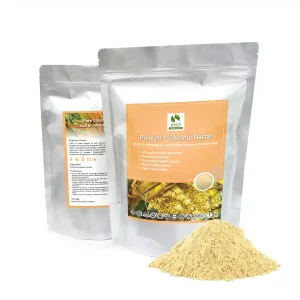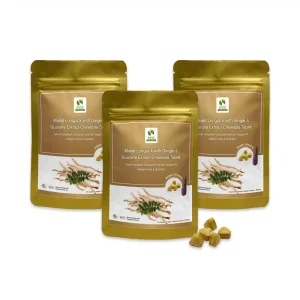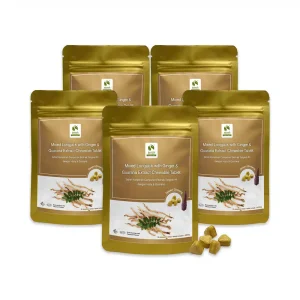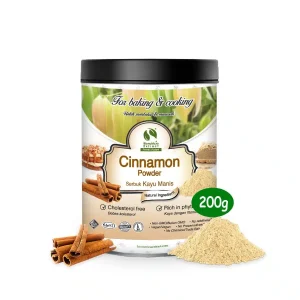Introduction
Native to parts of North Africa and Southeast Asia, Hibiscus sabdariffa is a shrubby tropical plant that produces light yellow flowers with reddish-purple centers.1 After the petals drop from the flower, its remaining deep red calyces (the cup-like structures formed by the sepals) grow into seed-containing pods that look like flower buds. Most of the hibiscus plant’s economic value, particularly as an ingredient in herbal teas, comes from the red calyx, although the leaves, seeds, and flowers are also used in local forms of traditional medicine.1 In commerce the calyces are known by the names hibiscus and roselle.
History and Cultural Significance
Hibiscus is now widely cultivated for its flowers, fruit, and calyces in the tropical and subtropical regions of almost every continent. The hibiscus plant has many medicinal, decorative, and culinary uses. In Egypt and Sudan the deep red tea from the calyces, called karkade, is popular as a “refrigerant,” i.e., a beverage that helps lower body temperature. In Egypt preparations from the calyx have been used to treat cardiac and nerve diseases and also to stimulate diuresis (increased production of urine).1 Elsewhere in North Africa, calyx preparations are used to treat cough, sore throat, and genital problems, and the emollient leaf pulp is used for treating external wounds and abscesses.2 In Europe dried calyces and epicalyces (a group of bracts simulating a calyx) are used primarily as a caffeine-free beverage tea.3 In 1990 the German Commission E evaluated various European uses of hibiscus and determined that efficacy for the claimed uses has not been substantiated, including its uses to stimulate appetite, for colds, catarrhs of the upper respiratory tract, to dissolve phlegm, as a gentle laxative, diuretic, and for circulatory disorders.4 Still, hibiscus is used in many medicinal herbal products in the German-speaking countries. It is used particularly in medicinal teas in combination with lemon balm leaf (Melissa officinalis, Lamiaceae) and St. John’s wort herb (Hypericum perforatum, Clusiaceae) for nervous restlessness and difficulty falling asleep.5 In Iran, sour hibiscus tea is a traditional treatment for hypertension.6 The stalks are used in making rope in Africa and the seeds are expressed for the oil.7
Modern Research
The traditional uses of hibiscus for its blood pressure (BP)-lowering effect have been clinically researched. A standardized extract of hibiscus was shown effective in lowering BP in hypertensive humans in a controlled Mexican trial.8 A clinical study in Iran also investigated the BP-lowering effects of sour tea (hibiscus tea) and found it superior to placebo in hypertensive patients.9 A recent double-blind, reference-controlled trial demonstrated a significant reduction in BP in the hibiscus group when compared directly with the antihypertensive drug lisinopril.8 Animal research suggests potential antioxidant and cholesterol-lowering effects of hibiscus teas.10 A recent clinical trial supports this activity.11
Animal research has tested the potential use of topical hibiscus extract from a different species, H. rosa-sinensis, as a cancer chemopreventive agent,12,13 but there are no human clinical studies supporting this activity.
An official quality control standards monograph for the whole or cut calyces and epicalyces collected during fruiting is published in the 5th edition of the European Pharmacopoeia under the European common name Roselle (Hibisci sabdariffae flos).14
Future Outlook
The main supply of hibiscus comes from Thailand, Sudan, China, and Mexico and is known as jamaica (ha-my-kah).15 Sudanese hibiscus, formerly the primary source of hibiscus sold in herbal teas in the United States, is considered by many in the herb trade as the preferred product. Due to the US trade embargo on agricultural goods from Sudan due to the conflict in Darfur, Sudanese hibiscus is now sold through brokers in Germany at a substantial price mark-up. Therefore, the majority of hibiscus in the United States now comes from China and Thailand. Germany and the United States are the main importers of hibiscus products. There is a growing industry of hibiscus production in the African nations of Gambia (where it is called wanjo), Mali, Namibia (omutete), Nigeria (zobo), Senegal (bissap), Tanzania, and Uganda, plus the Tamil Nadu area of South India, as well as in the Caribbean islands. Some of the African hibiscus production has focused on organically grown material, based on initiatives by the Swedish International Development Agency (SIDA) and a group called the Export Promotion of Organic Products from Africa (EPOPA).7 Additionally, the United States Agency for International Development (USAID)-backed Agriculture in Sustainable African Plant Products (ASNAPP) supports initiatives in which over 4000 rural farmers, mostly women, are growing the herb, mainly in the west-African area around Senegal.16
In 1999, reports from the Food and Agriculture Organization of the United Nations stated that the demand for hibiscus had been increasing steadily. At that time, about 15,000 metric tons of hibiscus were involved in international trade over a period of one year.15
—Gayle Engels


























